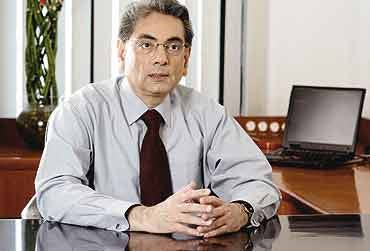Echoes of the Past: Narendra Patni's Legacy in Indian IT
The Visionary Journey of Narendra Patni
This weekend, I saw that Curae Hospital in Thane has been renamed. 🏥 Currae, owned by Apoorva Patni, son of Ashok Patni—who co-founded Patni Computer Systems along with Narendra Patni—always brings back memories. 🌟 Patni was my first company, and the hospital always evokes a sense of nostalgia about the story of one of the pioneers of the Indian IT industry. 💻✨
In Kishangarh, Uttar Pradesh, there was a textile mill named 'Maharaj Kishangarh Mills'. The owner of the mill was Shobhagmal Shethji. Narendra was the middle of his three sons. After studying at IIT Roorkee on a scholarship, Narendra went to America and joined MIT, considered the 'Mecca' of technical education, in 1964. After completing his education, he started working in America. With an enterprising nature and sharp insight, new horizons naturally beckoned. Narendra started a new business in book publishing. In the 1970s, the words 'software' and 'internet' were not even on anyone's radar. Magnetic tapes were used for printing at that time. The content for printing was saved on those tapes and then printed.
The fundamental principle of any business is to buy goods where they are cheap and sell them where there is demand. Narendra decided to use this principle creatively to start a new type of business. Combining the 'business values' from his Marwari-Jain background with his American experience, a new model emerged—'onsite-offshore'. The simple yet ingenious idea was to get data entry work done from India using magnetic tapes and sell it in America. Since there was no shortage of manpower in India, this work was cheaper compared to America.
The idea was new and somewhat complex. The concept of buying goods cheaply from one place and selling them at a higher price elsewhere was simple and well-known throughout history. However, this was not about goods, but about human intellect and labor. Before accepting the idea at full scale, Narendra decided to conduct a 'litmus test'. Narendra and his wife Poonam lived in an apartment in Boston. They divided their home into two parts—one room where Narendra and Poonam wrote down all the details about what work needed to be done and how it should be done. This information was then conveyed to a group sitting in the other room, and they were asked to start working. Until the work was completed, there was no contact or communication between the two rooms.
Hugo's famous quote is – “No one can stop an idea whose time has come.” This was the time for the onsite-offshore model and for bringing India onto the technology industry's map. Whether in business or politics, timing is crucial, and Narendra got it right. After the experimental success, 20-25 people were hired in Pune, and the work started. Thinking that using magnetic tapes with computers would be highly beneficial, Narendra explored the possibility of using computers. During the License Raj era, the company making computers informed that maintenance in India was not feasible. Narendra saw an opportunity here as well and started a new business in computer sales and maintenance. The year was 1976, and the company was named Patni Computer Systems.
Narayana Murthy, Nandan Nilekani, Shibulal, and others formed the Infosys — all were former employees of Patni. They left Patni to start Infosys. After Narayana Murthy, Achyut Godbole took over the reins of Patni. During his years, Patni flourished significantly and became one of the Indian companies to surpass the $1 billion mark. However, in January 2011, the American company iGate acquired Patni. Compared to Patni, iGate was a smaller company. During one of the negotiation meetings, Narendra even mentioned to iGate’s CEO Phaneesh Murthy, “I should be in the customer's role, not the seller's. But the situation is different.”
When Patni was sold to iGate, Narendra wrote a farewell email to all Patni employees. The email, like his nature, was succinct yet meaningful. He wrote, "Now our paths will diverge. My feelings have been perfectly expressed by an Urdu poet. Many will understand these lines, and they will explain them to others who may not." The lines are:
‘दर ओ -दीवार पे हसरत से नज़र करते हैं,
खुश रहो अहले वतन, हम तो सफर करते हैं.’
Sibling rivalry sank a leading IT brand. The story of the company named 'Patni' ended here, and on June 3rd 2014, the pioneer who wrote this story, the poster boy of the Indian IT world, departed into the annals of time.
Most people need fame to be successful. However, there are a few people who fame needs. Narendra Patni was one such person. Nowadays, new entrepreneurs in every corner gain immense fame for even a little success. But Narendra never made grand speeches, wrote impactful articles, or penned an autobiography. Only a handful of his interviews were ever published. That was not his nature. When you have complete confidence in your field and your commitment to it, you don't need anything else. Today, the measure of accomplishment is often gauged by fame and fortune. But this name 'Narendra Patni' will not fit into that mold. When the history of the Indian IT industry is written, time will not move forward without acknowledging Narendra Patni and Patni Computer System.



